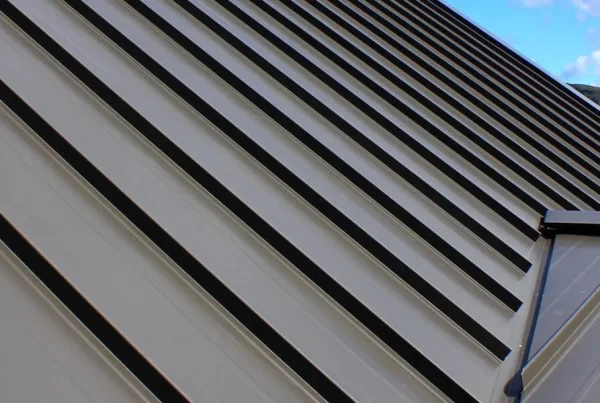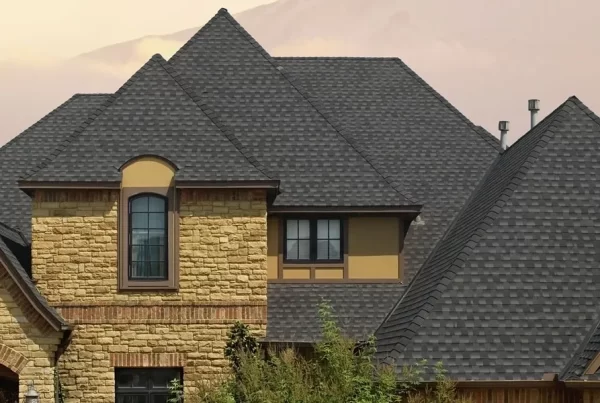Introduction
Understanding when a roof needs replacement is crucial for maintaining a home’s structural integrity and ensuring the safety of its inhabitants. A well-maintained roof protects against the elements, but over time, exposure to sun, rain, wind, and snow can wear down even the highest quality materials. This comprehensive guide delves into the top 10 tips for discerning when a roof needs to be replaced, with a focus on maximizing the lifespan of your roofing investment.
Top 10 Tips for Knowing When To Replace a Roof
1. Age of the Roof
The age of your roof is a primary indicator of its remaining lifespan. Different materials have varying lifespans; for instance, traditional asphalt shingles typically last 20 to 25 years, while metal roofs can last up to 70 years. If your roof is approaching or has surpassed its expected lifespan, it’s prudent to start planning for its replacement.
2. Missing or Damaged Shingles
Shingles that are missing, cracked, or warped are clear signs of deterioration. Not only do they compromise the roof’s aesthetic appeal, but they also indicate potential vulnerabilities where water can enter and cause damage to the underlying structures. Regular inspections can help identify these issues early, but widespread damage often necessitates a complete roof replacement.
3. Sagging Roof
A sagging roof is a serious concern that indicates structural issues, possibly from long-term water damage or an overloaded roof. This sagging can be a precursor to more significant problems, including potential roof collapse. Prompt action is required to address the underlying structural issues and replace the roof to prevent any danger to occupants.
4. Frequent Leaks
While occasional leaks can often be repaired, frequent or multiple leaks suggest a systemic failure of the roof’s waterproofing ability. Persistent leaks can lead to mold, mildew, and rot, compromising the home’s structural integrity and indoor air quality. A roof that leaks regularly despite attempts at repair should be evaluated for replacement.
5. Daylight Through the Roof Boards
If daylight is visible through the roof boards in the attic, it indicates significant gaps and weaknesses in the roof structure. These openings can allow water and pests into the home, leading to further damage. Replacing the roof becomes necessary to seal these gaps and protect the home from external elements.
6. Granules in the Gutters
Asphalt shingles shed their granules towards the end of their life cycle. Finding an excessive amount of these granules in the gutters is an indicator that the shingles are wearing out and may no longer effectively protect the roof. This granule loss can accelerate roof aging and lead to the necessity for a roof replacement.
7. Moss, Mold, or Fungi Growth
The presence of moss, mold, or fungi on a roof doesn’t just compromise the home’s aesthetic; it can also be indicative of moisture retention which can weaken the roof structure over time. While some of this growth can be cleaned, extensive coverage may require a roof replacement to address underlying moisture issues.
8. High Energy Bills
An unexplained increase in heating or cooling bills may point to insufficient roof insulation or ventilation, leading to air leaks. If improving insulation or repairing the roof doesn’t rectify these high energy costs, it may be a sign that the roof needs to be replaced to ensure proper energy efficiency.
9. Water Damage or Stains
Interior water stains on ceilings or walls are often the result of roof leaks. These stains can indicate that water is seeping through the roof and into the home, potentially causing structural damage. A thorough inspection can determine if a repair will suffice or if the roof needs to be replaced to prevent further water ingress.
10. Curling or Buckling Shingles
Curling, buckling, or “bald” shingles that have lost their granules are indicative of age or exposure to excessive heat. This deformation can compromise the roof’s ability to shed water and protect the home from the elements. When a significant portion of the roof exhibits these signs, replacement is often the most practical solution.
Conclusion
Determining when a roof needs to be replaced is critical for ensuring the longevity and safety of your home. By paying attention to the roof’s age, the condition of the shingles, and signs of structural issues, homeowners can make informed decisions about roof replacements. Regular inspections and maintenance can extend the life of your roof, but when the signs discussed above are evident, it’s time to consider a replacement. Acting promptly can prevent further damage to your home and ensure that your roof continues to provide the necessary protection against the elements.
Ensuring your home is well-protected starts with a solid, reliable roof. By understanding the key indicators of roof wear and tear, homeowners can plan for roof replacements at the appropriate time, avoiding emergency situations and ensuring the home remains safe and dry for years to come.





